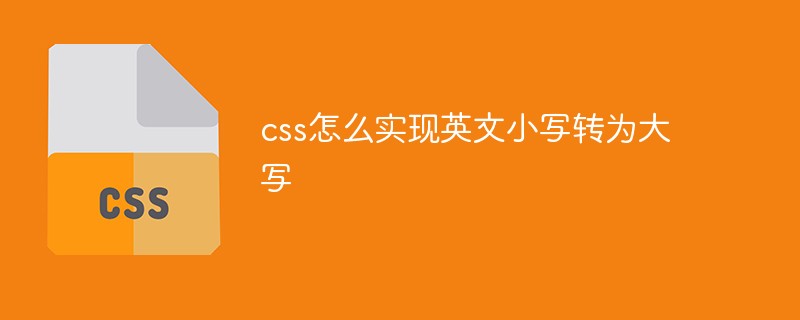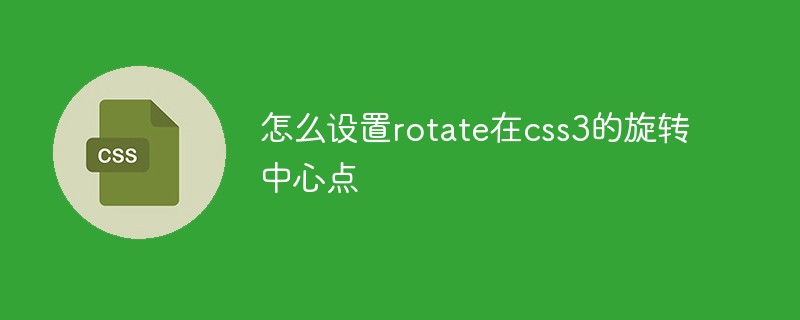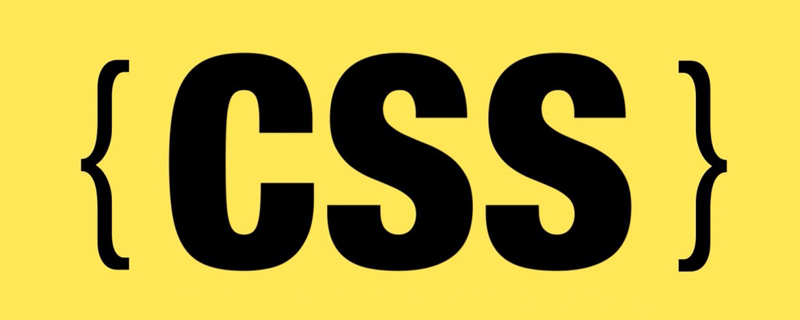This time I will show you how to use CSS selectors efficiently, and what are the precautions for using CSS selectors efficiently. The following is a practical case, let’s take a look.
When I first wrote CSS, I thought it was very simple and could be written as wildly as possible. Later, I gradually discovered that although writing without rules can achieve results, in actual development, it may result in more useless or repeated work, and CSS is not efficient. Therefore, during later development, we deliberately followed certain rules to write efficient and reusable CSS as much as possible. To summarize, the main aspects are the following. First look at a short piece of CSS code:#menus > li { font-size: 14px; }


1. Avoid using wildcard rules
In addition to wildcard selectors in the traditional sense, we have classified adjacent sibling selectors, sub-selectors, and descendant selectors that match attribute selectors into wildcard rule categories. It is recommended to only use ID, class, and label selectors. .2. Do not limit the ID selector
A specified ID can only correspond to one element on the page, so there is no need to add additionalqualifiers. For example, p#header is unnecessary and should be simplified to #header.
3. Do not limit the class selector
Do not limit the class selector with specific labels, but expand the class name according to the actual situation. For example, change li.chapter to .li-chapter, or even better, .list-chapter.4. Make the rules as specific as possible
Don’t try to write long selectors like ol li a, it’s better to create one like .list-anchor class and add it to the appropriate element.5. Avoid using descendant selectors
Usually the cost of processing descendant selectors is the highest, but using sub-selectors can also get the desired results, and More efficient.6. Avoid using tag-sub-selectors
If there are tag-based sub-selectors like #menus > li > a, then they should be used A class to associate with each label element, such as .menus-item.7. Question all uses of subselectors
Examine all uses of subselectors and replace them with concrete classes whenever possible.8. Rely on inheritance
Understand which attributes can be inherited, and then avoid repeatedly specifying rules for these attributes. For example, specify I believe you have mastered the method after reading the case in this article. For more exciting information, please pay attention to other related articles on the php Chinese website! Recommended reading:CSS3 to create a striped background
css3 to create a semicircular arc
The above is the detailed content of How to use CSS selectors efficiently. For more information, please follow other related articles on the PHP Chinese website!
 css ul标签怎么去掉圆点Apr 25, 2022 pm 05:55 PM
css ul标签怎么去掉圆点Apr 25, 2022 pm 05:55 PM在css中,可用list-style-type属性来去掉ul的圆点标记,语法为“ul{list-style-type:none}”;list-style-type属性可设置列表项标记的类型,当值为“none”可不定义标记,也可去除已有标记。
 css与xml的区别是什么Apr 24, 2022 am 11:21 AM
css与xml的区别是什么Apr 24, 2022 am 11:21 AM区别是:css是层叠样式表单,是将样式信息与网页内容分离的一种标记语言,主要用来设计网页的样式,还可以对网页各元素进行格式化;xml是可扩展标记语言,是一种数据存储语言,用于使用简单的标记描述数据,将文档分成许多部件并对这些部件加以标识。
 css3怎么实现鼠标隐藏效果Apr 27, 2022 pm 05:20 PM
css3怎么实现鼠标隐藏效果Apr 27, 2022 pm 05:20 PM在css中,可以利用cursor属性实现鼠标隐藏效果,该属性用于定义鼠标指针放在一个元素边界范围内时所用的光标形状,当属性值设置为none时,就可以实现鼠标隐藏效果,语法为“元素{cursor:none}”。
 rtl在css是什么意思Apr 24, 2022 am 11:07 AM
rtl在css是什么意思Apr 24, 2022 am 11:07 AM在css中,rtl是“right-to-left”的缩写,是从右往左的意思,指的是内联内容从右往左依次排布,是direction属性的一个属性值;该属性规定了文本的方向和书写方向,语法为“元素{direction:rtl}”。
 css怎么设置i不是斜体Apr 20, 2022 am 10:36 AM
css怎么设置i不是斜体Apr 20, 2022 am 10:36 AM在css中,可以利用“font-style”属性设置i元素不是斜体样式,该属性用于指定文本的字体样式,当属性值设置为“normal”时,会显示元素的标准字体样式,语法为“i元素{font-style:normal}”。
 css怎么实现英文小写转为大写Apr 25, 2022 pm 06:35 PM
css怎么实现英文小写转为大写Apr 25, 2022 pm 06:35 PM转换方法:1、给英文元素添加“text-transform: uppercase;”样式,可将所有的英文字母都变成大写;2、给英文元素添加“text-transform:capitalize;”样式,可将英文文本中每个单词的首字母变为大写。
 怎么设置rotate在css3的旋转中心点Apr 24, 2022 am 10:50 AM
怎么设置rotate在css3的旋转中心点Apr 24, 2022 am 10:50 AM在css3中,可以用“transform-origin”属性设置rotate的旋转中心点,该属性可更改转换元素的位置,第一个参数设置x轴的旋转位置,第二个参数设置y轴旋转位置,语法为“transform-origin:x轴位置 y轴位置”。


Hot AI Tools

Undresser.AI Undress
AI-powered app for creating realistic nude photos

AI Clothes Remover
Online AI tool for removing clothes from photos.

Undress AI Tool
Undress images for free

Clothoff.io
AI clothes remover

AI Hentai Generator
Generate AI Hentai for free.

Hot Article

Hot Tools

EditPlus Chinese cracked version
Small size, syntax highlighting, does not support code prompt function

Dreamweaver CS6
Visual web development tools

WebStorm Mac version
Useful JavaScript development tools

SublimeText3 Mac version
God-level code editing software (SublimeText3)

DVWA
Damn Vulnerable Web App (DVWA) is a PHP/MySQL web application that is very vulnerable. Its main goals are to be an aid for security professionals to test their skills and tools in a legal environment, to help web developers better understand the process of securing web applications, and to help teachers/students teach/learn in a classroom environment Web application security. The goal of DVWA is to practice some of the most common web vulnerabilities through a simple and straightforward interface, with varying degrees of difficulty. Please note that this software







